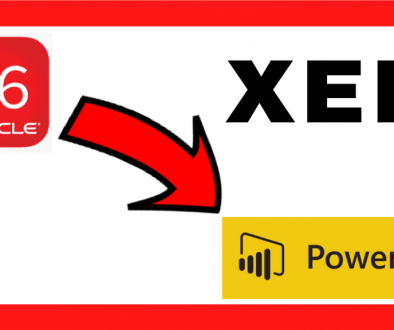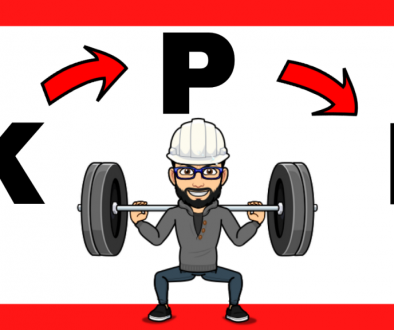Blockchain and Project Management
The year 2019 begins. Davos Forum begins in January to talk, among other topics, about the Fourth Industrial Revolution. But what about the Blockchain and Project Management? In Project 2080 we like to go hand in hand with technological changes and try to anticipate the future of Project Management. That’s why we bring you this article that talks about the Blockchain technology and its application to the Construction and Project Management businesses. And if you still have any doubts or want to go deeper, we recommend one of the best books about the Blockchain Revolution.
The Pre-Blockchain Era
It is important that we know what the historical context of the pre-Blockchain era has been. With the arrival of the new century, many changes have passed in front of our lives. Many of them, after having been accepted by society, decided to stay with us.
Construction and Project Management: its history prior to Blockchain
The field of Construction and Project Management have also notably participated in this maelstrom of changes of recent times, although they have always been considered as more reluctant industries to change and with a rather slow adaptation. This caution has not prevented that the computer science, Internet, the e-mail or the mobile telephony have remarkably improved the way of managing our projects.
In the same way, improvements in construction processes, advances in the field of engineering and architecture, new construction materials, a more qualified staff and access to the international market have made the construction works reach a level of competitiveness much greater than they had in the last century.
But there is also another side of the coin in the field of Construction and Project Management. They have always been closely linked to the world of corruption. Many times as part of the electoral promises of the political parties. For one reason or another, many projects have always lived with suspicion and have thrown a long shadow of putrefaction behind them.
Adaptation to change
We are living new times, similar to those that emerged with the Industrial Revolution or the Internet Era. We are at a time when Augmented Reality is already a fact, BIM technology already implemented in many projects presents a clear roadmap for the coming years, Big Data and the Internet of Things is presented as something already basic within any company, Cryptocurrencies are currently listed on the stock market and are gaining thousands of followers every day, advances in biotechnology help us to identify diseases that until now was impossible to diagnose using conventional techniques, financial transactions can now be done instantly not depending on the location, the decentralization of Energy is already a fact in some parts of the world, we are even close to being able to go to the Moon on vacation.
The question is: have the Construction and Project Management Sectors adapted in an organic way to the changes that are taking place? In our point of view, the answer is negative.
How to manage this new paradigm?
The technological base that is behind many of the events that are taking place today, seen above, is called Blockchain or Blockchain. The Intelligent Contracting, the decentralization of the Databases, the Value Exchange, Intelligent Identification or the Smart Supply Chains, are some of the tools that work with this technology and its application to the Construction sector and to the Project Management. with it: greater collaboration, decentralization of transactions, savings of money between transactions, open and transparent contracts, greater competitiveness and greater efficiency in approval periods, among others. Before we can see what the potential of the Blockchain within the field of Construction and Project Management, we know the current state of these two sectors, as well as the advantages and disadvantages of these two technologies.
Construction and Project Management today
If we ask ourselves how the highly regulated nature of these two Industries can influence their adaptation to the new times, we might think that it would be impossible to carry it out. Both Construction and Project Management are two highly structured industries and are governed by a multitude of processes and procedures that involve a large number of third parties and intermediaries. This dependence increases the rigidity in the face of change. The number of contracts that can be reached are counted by 3 figures in most cases, however small the project may be.
Project type
Let’s see the steps to follow for the construction of a new bridge that connects two nearby locations:
- Bidding and Contracting: first, the preparation of the contract would be necessary, followed by a public announcement. Then, the companies interested in the contract and that meet the requirements, will present the necessary documentation, which always involves other parties. Once the documentation has been reviewed, the bids are evaluated and the presentation of the definitive guarantee and remaining documentation is requested. Once the resolution is published, the signing of the contract becomes effective.
- Design and Purchases: during the bidding process, a Previous Study may have been carried out by a consulting company, attaching documents such as the Descriptive Report, Budget, Plans and Work Plan, among others. These documents will be the basis for the execution of the works and to carry out the procurement process, hiring subcontractors and supplying materials for the execution of the works: formwork, concrete, scaffolding, steel, etc.
- Execution of the works: it is time to build and set up what until now only existed on paper. Now it will also be necessary to negotiate with the local authorities and the security forces the detours of traffic, new signage, etc. Once all the interfaces that exist between the parties involved have been resolved, the work is carried out.
- Delivery and Commissioning: finally, the bridge is delivered to the client with a series of necessary documentation.
As we have seen, the process is long and tedious. Involves a multitude of actors in decision making, such as governments, banks and other companies. This fact also increases the distrust among the citizens when they hear about new and promising projects.
Characteristics of Blockchain Technology
To know the potential that the Blockchain can bring to the Construction Industry and Project Management, let’s first see the advantages and disadvantages of this new technology:
Advantages of Blockchain
- Decentralization: is a tool capable of decentralizing any type of transaction, understanding as transaction any exchange of goods and / or services that have some type of value, such as: energy, consulting services, road tolls, infrastructure, telephony, insurance of life, private vehicles, construction machinery, etc.
- Transparency: we work in a common network with universal access to data. All transactions are approved in common and saved by each of the members of the Blockchain Network.
- Elimination of Intermediaries: transactions are carried out as equals. No intermediaries or a centralization of them are necessary.
- Cost Reduction and increase in transaction speed: greater ease and efficiency in international transactions. The time and cost of them would be reduced.
- Trust: it is a tool that has great potential in countries where people do not trust or in banks, institutions, governments, laws, the local financial system or the rest of the population.
- Security: the data that is recorded in Blockchain can never be changed. This helps prevent fraud by data manipulation.
- Large number of uses: almost anything that contains value can be carried out through Blockchain technology.
- Easy access: it is a technology that makes it easy to create applications without a large investment in infrastructure, thanks to recent innovations, such as Ethereum.
Disadvantages of Blockchain
- Lack of privacy: many Blockchain are not private
- Concept of insecurity on the part of the citizen. If it happens that elements belonging to Blockchain are stolen, they will disappear forever
- Lack of centralized control: any change must be agreed with the rest of the network
- Risk of a 51% attack on the network. Only by taking control of 51% or more of the network, would it be possible to attack the Blockchain, make changes or change the historical data already recorded
- Very young technology: today cryptocurrencies are the field that uses Blockchain technology the most
- Cost: the energy cost to generate value through this technology is massive
- Scalability problems: there is still a lack of scaled evidence of this technology
- Reputation and trust: many times this technology has been linked to terrorism, drugs and crime.
- Lack of understanding of Blockchain technology: the population still has a hard time knowing what Blockchain is and how it works
- Regulation and integration: currently there is no regulation of this technology. Governments and banks resist the change towards this new paradigm
- Loss of some of the current jobs
Potential within the Construction and Project Management Sectors
Once presented this new technology, we are already in a position to see the potential that the Blockchain has within the Construction Industry and Project Management:
Saving:
Costs would be reduced by reducing both the number of intermediaries and the time of transactions.
Supply chain
It would be more efficient than it is today by reducing the number of transactions necessary to have the final product. We could deal directly with companies located anywhere in the world to hire any service. The Big Data would help us locate the best company to perform certain jobs and the creation of Intelligent Contracts would facilitate the transaction.
Own payment method
It is beginning to talk about specific payment methods for certain sectors. In other words, there could be specific cryptocurrencies for payment of energy, for transportation, etc.
Smart Contracts
A more transparent and agile contracting system would be key to an improvement in these two sectors.
Faster transactions
Payments could be made instantly, without waiting. Why wait to charge for the work done? These transactions would be viable from any part of the planet.
New business models
New business models based on peer to peer business would be created. The Intelligent Contracts and the elimination of intermediaries would help in their development.
Decrease in corruption
Due to the reduction of intermediaries and the greater transparency. The scourge of the 21st century could be controlled: corruption. The fact of being a universal access technology, anyone would be able to know the status and history of transactions. On the other hand, the data stored in Blockchian could not be manipulated.
Más transparencia y confianza
Maximum transparency within the community. It would be clear who hired, whom you hire, why you hire, how much you hire and when you hire.
Human relations
This factor would improve thanks to new business models in which the producer is in direct contact with the buyer. This will develop new networks of trade between equals.
New digital links
Project Management and Construction would be totally linked to the digital world.
Universal use
A tool could be created that would not only serve to manage projects on our planet. We are referring to the management of future projects at a spatial level.
IN PROJECT 2080 WE WOULD LIKE YOU TO REMEMBER
The Construction Industry and Project Management are still governed by processes and procedures of the last century. The alternative to new technologies that contribute value in the current times has not been given. Only the use of the internet, e-mails or a few computer tools have been introduced in their day to day.
The population and the companies themselves have lost confidence in the current system. Due to: corruption, lack of transparency, long hiring processes or the large number of intermediaries involved in any process
Thanks to the Blockchain, a new window can be opened in the Construction Industry and Project Management. Technology that applied together with BIM (Building Information Modeling), Big Data, the Internet of Things, Augmented Reality make these two sectors are pioneers in the change towards a new world system. The decentralization of these sectors:
- will bring with it a series of advantages that enhance competitiveness among the parties involved,
- a new management system totally different from the one known up to now.
And as we told you at the beginning of this post, if you want to find out more about this technology, do not miss this book about the Blockchain Revolution.
Are you ready?



